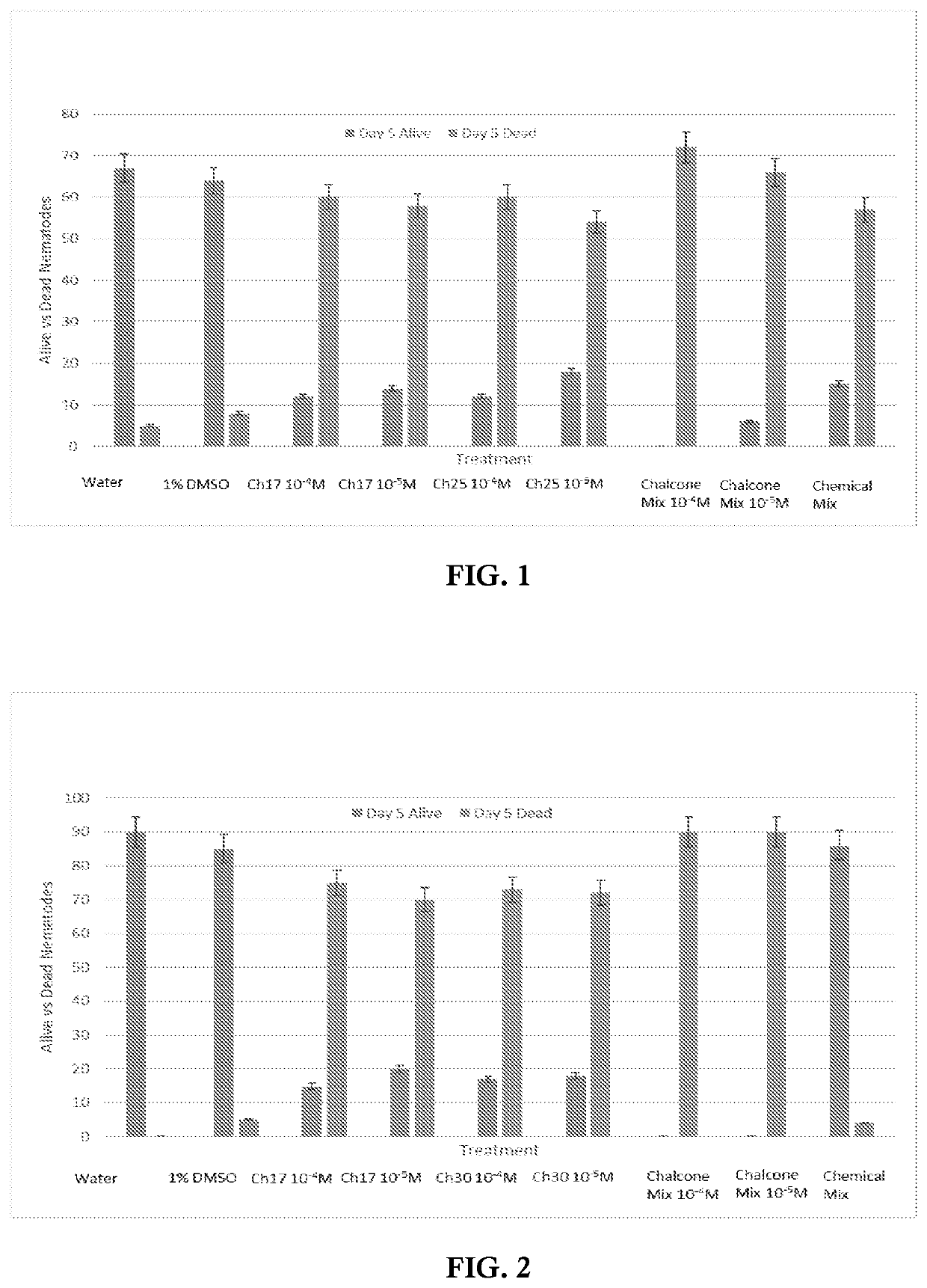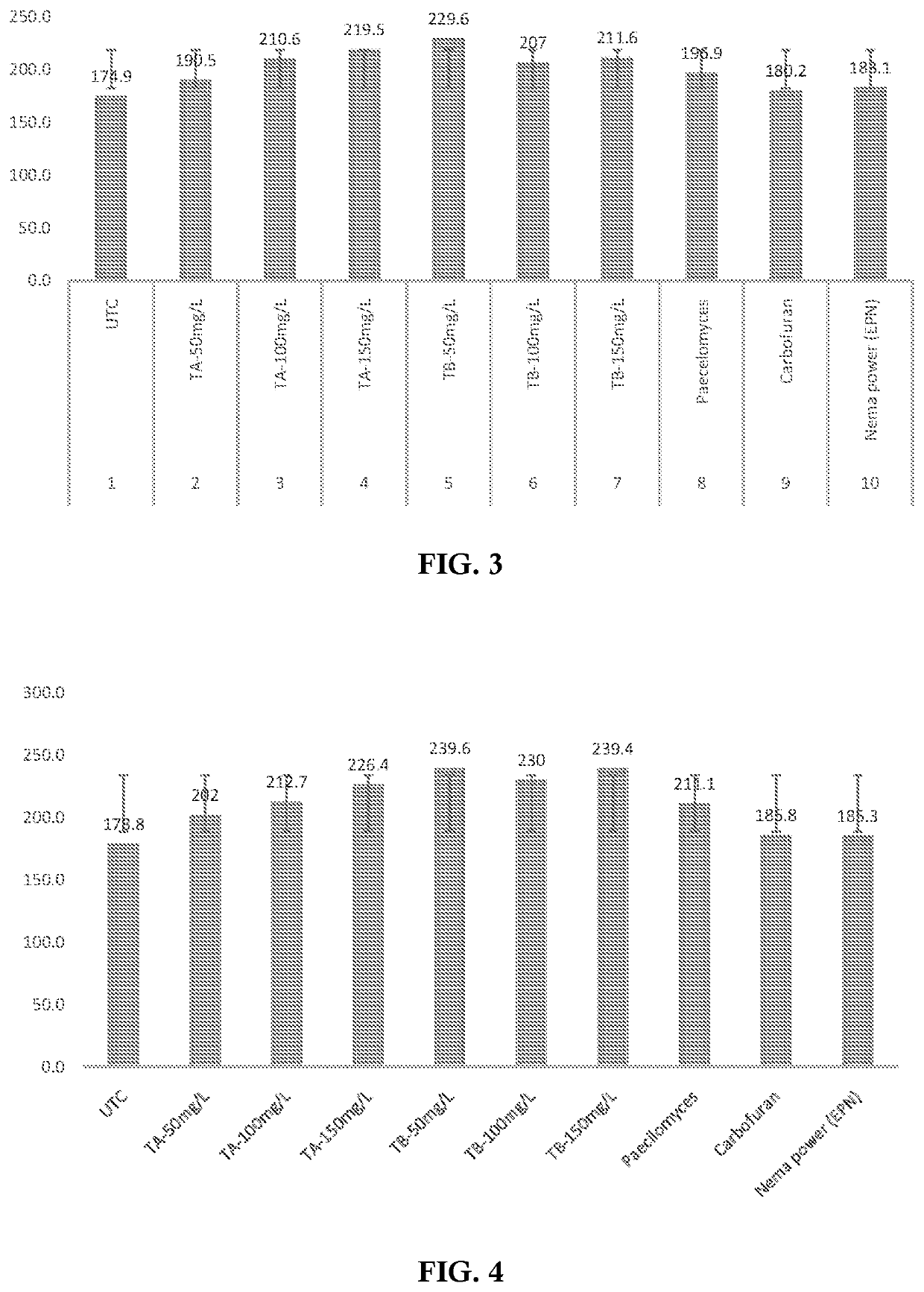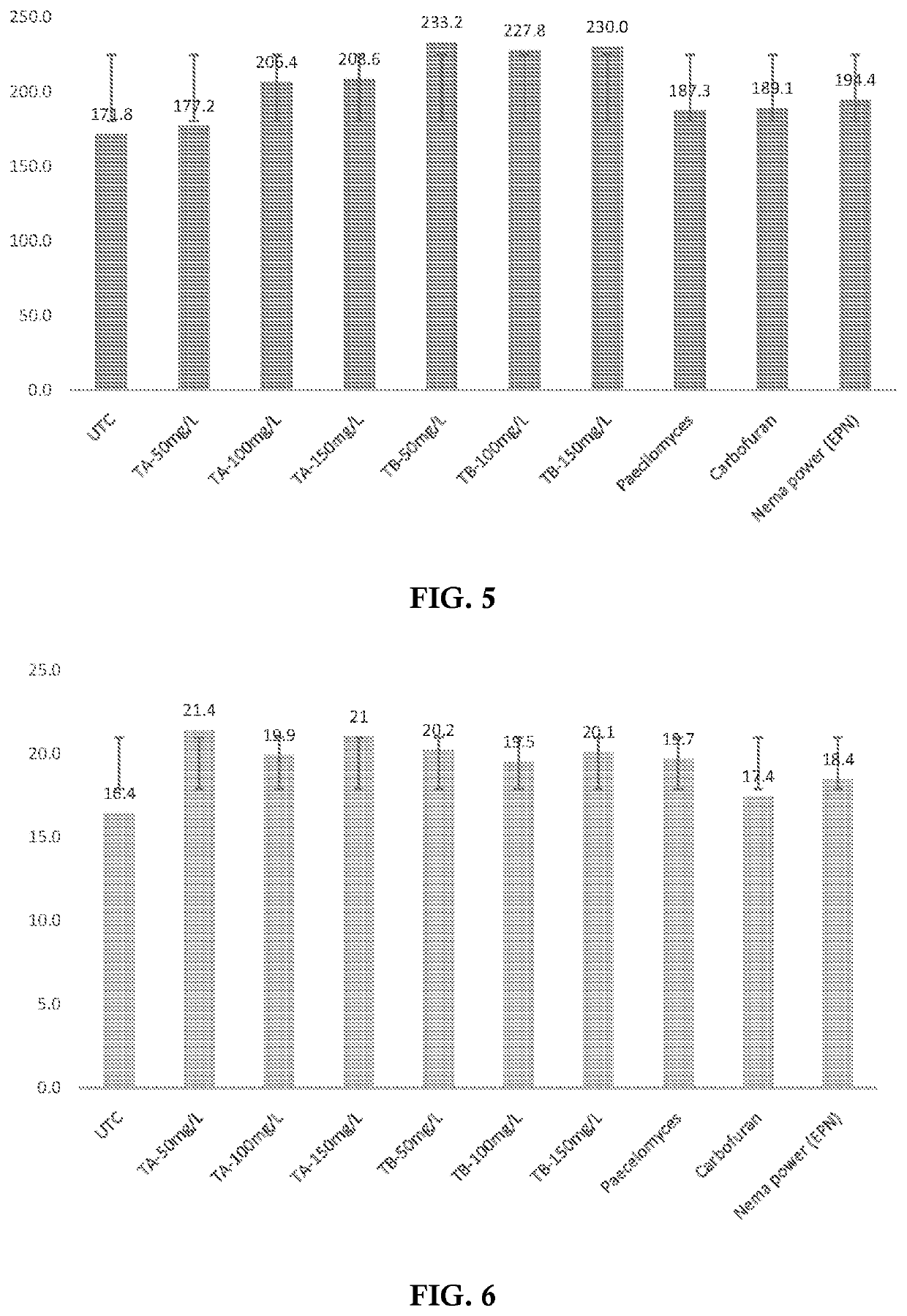A synergistic composition of nematicide comprising of chalcones
- Summary
- Abstract
- Description
- Claims
- Application Information
AI Technical Summary
Benefits of technology
Problems solved by technology
Method used
Image
Examples
example 1
Procedural Methodology
A) M. incognita Propagation
[0076]Tomato plants were inoculated with M. incognita juveniles and maintained in a growth chamber. After at least two months, the M. incognita eggs were extracted from the roots for experiments. The procedure followed for extracting M. incognita eggs is explained below.
[0077]The root tissues were either chopped by hand using a surgical blade and a watch glass, or it was chopped up using a food processor. The chopped tissue was then placed in a bottle and washed with a 10% dilution of bleach. Under sterile conditions, the root solution was then poured through sieves (60 count sieve on top, 500 count sieves on the bottom). The crude egg collection was collected from the bottom of the 500-count sieve into 5 mL each of bleach and egg mixture in 15 mL Falcon tubes. 5 mL of 70% sucrose solution was then placed in each Falcon tube. A 1 mL layer of double distilled sterile water was then gently placed on top of the sucrose mixtures in each F...
example 2
Efficacy of the Nematicidal Composition
[0080]As described earlier, equal number nematodes were incubated in various treatment solutions in a 96-well plate for 5 days. The number of nematodes dead or surviving on Day 5 was counted. Results of the experiment are summarized in FIG. 1 which depicts a graph showing the effect of treatment of combination comprising of chalcone 17 and chalcone 25 against nematodes in 96-well plates. FIG. 2 depicts a graph showing the effect of treatment of combination comprising of chalcone 17 and chalcone 30 against nematodes in 96-well plates.
[0081]As depicted in FIG. 1, and FIG. 2 incubation of J2 stage juvenile nematodes in water, or 1% DMSO caused less than 10% death of nematodes on Day 5, and these treatments served as negative controls. Whereas, incubation of juvenile nematodes in a chemical mixture comprising of chlorpyriphos and imidacloprid (1:1 ratio) resulted in around 50% death on Day 5 which served as a positive control. Treatment juvenile ne...
example 3
Effect of Chalcones on Common Microorganisms
[0084]Two common soil microorganisms (Pseudomonas aeruginosa and Bacillus subtilis) and two common laboratory microorganisms (Escherichia coli, and Saccharomyces cerevisiae) were tested for the effects of individual chalcones. Microorganisms were grown on nutrient agar plates containing 10−4, 10−5, or 10−6 M concentrations of chalcones and Colony Forming Units (CFU) were counted after 24-48 hours of growth in nutrient agar plates.
TABLE 2Effect of chalcones on common microorganismsOrganism(Gram(Gram(GramTreatmentnegative)positive)negative)S. cerevisiaeYM100.0100.0100.0100.0DMSO97.296.4101.295.5Chalcone 1755.869.0115.497.0(10−4 M)Chalcone 1753.951.4131.382.8(10−5 M)Chalcone 1756.050.897.3106.7(10−6 M)Chalcone 25148.855.152.397.8(10−4 M)Chalcone 25148.155.969.6125.4(10−5 M)Chalcone 25141.283.6103.390.3(10−6 M)
[0085]Chalcone 17 appeared to limit the growth of the two soil microorganisms tested (P. aeruginosa, B. subtilis) but not the growth of...
PUM
 Login to View More
Login to View More Abstract
Description
Claims
Application Information
 Login to View More
Login to View More - R&D
- Intellectual Property
- Life Sciences
- Materials
- Tech Scout
- Unparalleled Data Quality
- Higher Quality Content
- 60% Fewer Hallucinations
Browse by: Latest US Patents, China's latest patents, Technical Efficacy Thesaurus, Application Domain, Technology Topic, Popular Technical Reports.
© 2025 PatSnap. All rights reserved.Legal|Privacy policy|Modern Slavery Act Transparency Statement|Sitemap|About US| Contact US: help@patsnap.com



